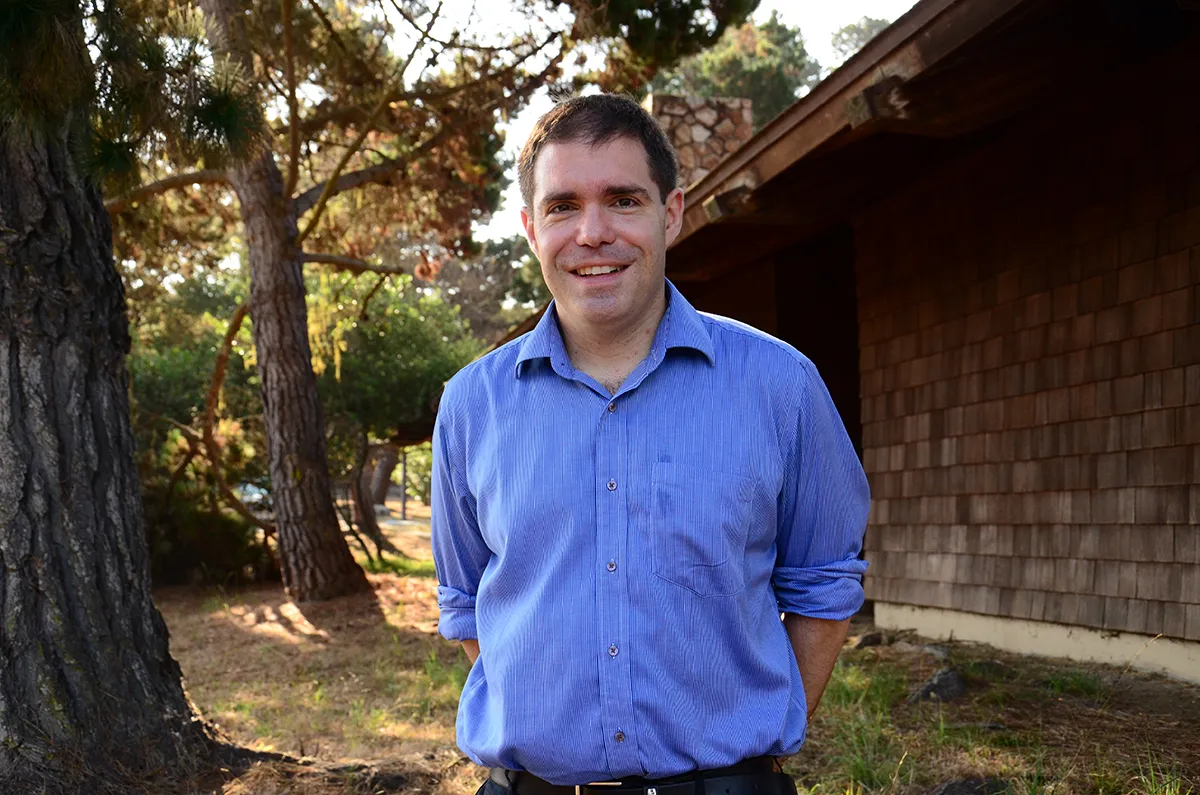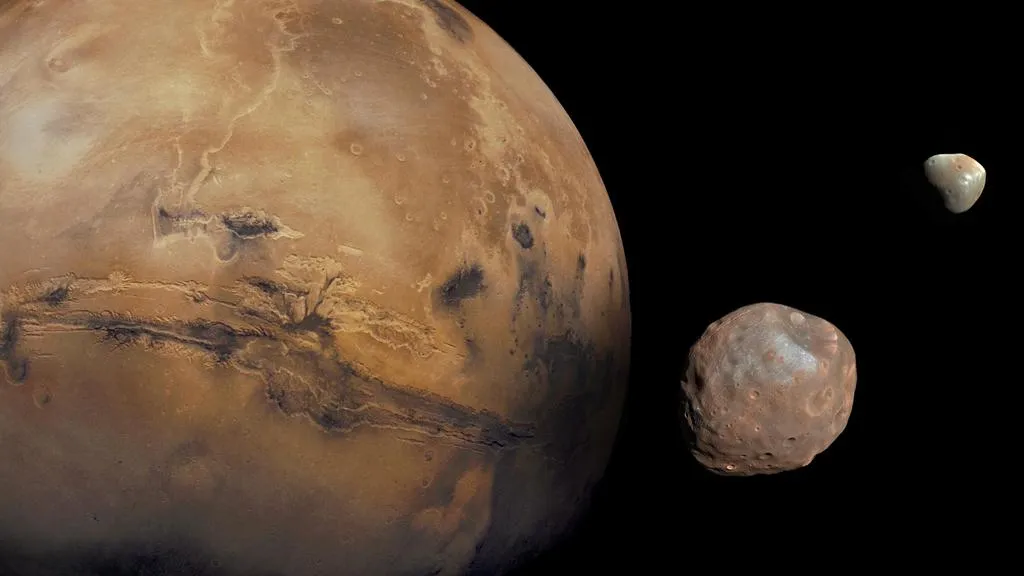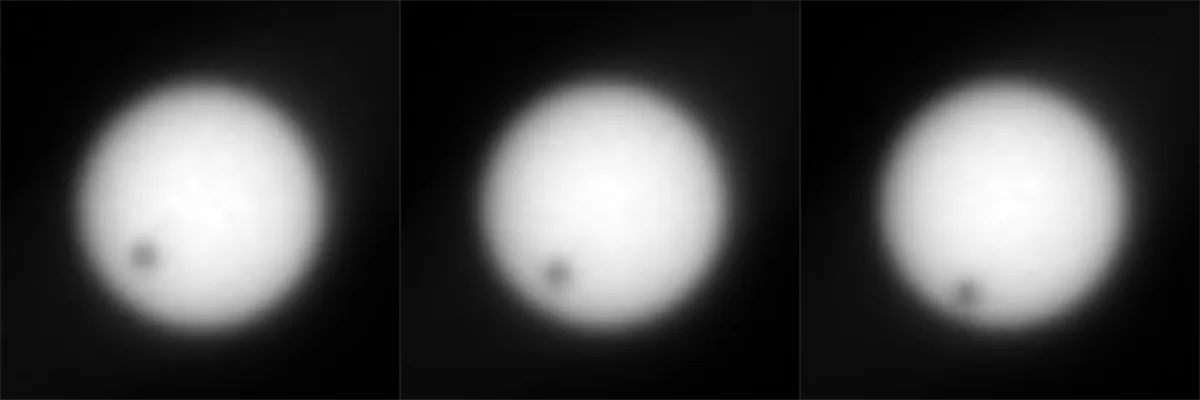Mars has two moons: Phobos and Deimos. They are among the smallest moons in the Solar System, Phobos being about 22km wide, and Deimos being only slightly smaller at 13km wide. They also orbit remarkably close to Mars.
Phobos in particular orbits around 6,000km above the surface of the Red Planet, whereas Deimos's orbit takes it out as far as 23,458km away from Mars.
The orbit of Deimos is the subject of much speculation, due to its strange tilt. One theory suggests that it may have been knocked off course in its ancient past by a celestial grandparent.
We spoke to Mars expert Dr. Matija Ćuk, who's a research scientist at the SETI Institute - part of that enduring question 'will we ever find life beyond Earth?', to find out more about Deimos's history.
Did you know that it's possible to see Phobos and Deimos? Find out how in our guide How to see the moons of Mars. Have you ever wondered what the night sky would look like on Mars?

What’s unusual about the orbit of Mars moon Deimos?
Both Phobos and Deimos are orbiting close to the equatorial plane of Mars. Most satellites of Jupiter and Saturn do that and it’s a strong indicator that the moons formed together with the planet.
What’s really interesting though is that Deimos’s orbit is not exactly in the equatorial plane but a bit off, by about two degrees. That doesn’t sound much, but for orbital scientists it’s a significant amount, so we have to figure out a way to see why it’s tilted so much.
Is there anything else unusual about Deimos's orbit?
The tilt of the orbit is only half the story because its shape is also atypical. All orbits are elliptical, but some are more elliptical than others; we measure the eccentricity of the orbit to tell us how non-round it is.
Usually, eccentricity and inclination grow together. For example, if you get random kicks to the orbit by an impact or similar events then the tilt and eccentricity will grow together.
But for Deimos’s orbit it’s not like that: the eccentricity is small yet the inclination is decisive, which indicates that one large process changed its inclination.
We’ve been looking at what could have done that and we’ve realised that an orbital resonance with another moon could have been the cause, the orbital period of this other moon being related to Deimos’s by a precise ratio.

Which moon might it have been in resonance with?
Mars does have another moon, Phobos, but it’s too small to do this. However, a paper from a few years ago suggests that Phobos could just be a remnant of a moon-ring cycle at Mars.
The theory is that Mars used to have bigger moons – the grandparents of Phobos – but each one fell down onto the planet, breaking up into rings, with each ring then forming a new moon.
While some of the particles in the ring fall onto the planet, some of the material moves out and forms a new moon, with each successive moon being less massive than the previous one.
This indicates that Deimos’s tilt was caused by the grandparent of Phobos.
Does this mean that Phobos might also break apart?
The problem with a moon being as close to its planet as Phobos is to Mars, is that it’s orbiting faster than the planet is spinning. That means the gravitational tides are pushing Phobos in the opposite direction from other planetary satellites.
In most systems, the moon moves away from the planet due to the tides, but Phobos’s rapid orbit is decaying and falling into Mars. Any previous moon in the same position would have done the same.
Phobos is supposed to crash into Mars in about 40 million years, but it won’t make it to the surface. It will get close and then the gravity of Mars will pull it apart and the debris will form a ring.

How does this ring-moon cycle affect Deimos?
For the orbital resonance to tilt Deimos, you need the two moons – an inner one and Deimos – to have converging orbits, and their distance also has to be decreasing.
Since Deimos doesn’t move much, the inner moon has to move out, which is opposite to the effect of Mars’s tides alone.There has to be something other than Martian tides causing it to move out and that’s where the ring comes in.
When you have a moon and ring together, the moon is always exterior to the ring, and so the ring is pushing it out. It’s a very specific thing you can’t get around.
If the inner moon is going to move out, then there also has to be a ring there at that time.
When did Phobos’s grandparent moon tilt Deimos?
As the inner moon, the grandparent of Phobos, moves out, at some point its orbital period will be exactly one third that of Deimos. As it moves out it will pick up Deimos, which stays at a 3:1 ratio with the inner moon.
As Deimos is pushed out, its tilt continues to increase. The tilt at the point when the pairing breaks up will tell us what the mass of the inner moon was. Simulations tell us that was about 20 times that of Phobos.
Matija Cuk is a research scientist with the SETI Institute researching Solar System dynamics. This interview originally appeared in the October 2020 issue of BBC Sky at Night Magazine.

